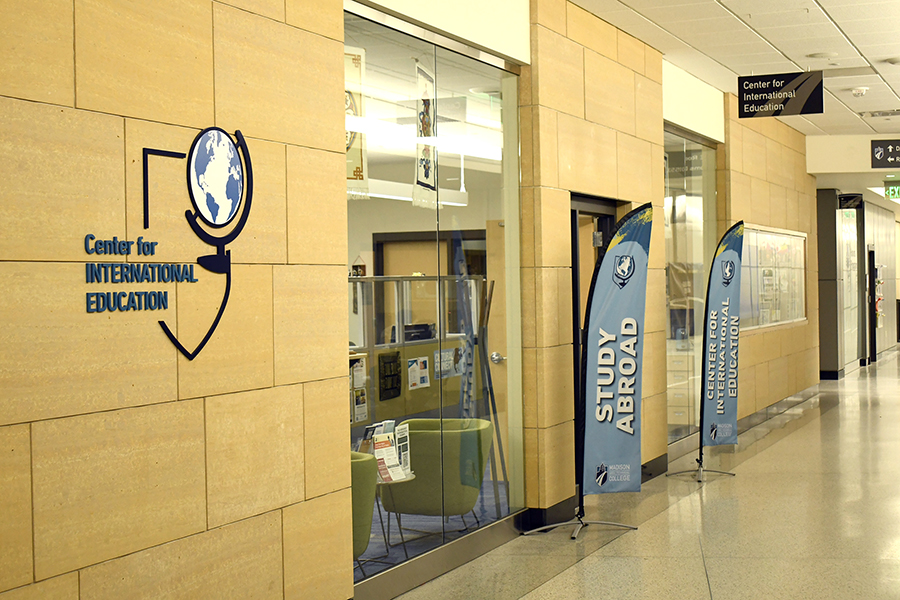Gov. Scott Walker’s proposed biennium budget for 2011-2013 slashes funding for state technical colleges by $35.8 million each year and freezes tax levies at the current dollar amount. This puts significant financial strain on the 16 state technical colleges that are scrambling to absorb the cuts.
Madison Area Technical College is facing a total projected gap of $10.3 million dollars for the 2011-2012 fiscal year. With a $5 million deficit estimated from the cuts in state funding and another $5.3 million from the tax levy freeze, some say these cuts have thrown the college into ‘crisis mode.’
The current Madison College budget reduction plan is an attempt to cover the gap through many different means including increased employee contributions to pensions, increased tuition and class sizes, not filling vacant positions, and layoffs as a last resort. There is some concern that these cuts will have a negative impact on the quality and availability of education at the college.
“I think what we do here is very positive for students and they can find a lot of ways to enrich themselves here at the college. I don’t think that’s going to change,” said Dr. Jon Bales, chair of the district board. “From an operational standpoint, from a governance standpoint, it is certainly going to be more challenging to maintain the scope of services within restricted budgets … but our goal is to try to not have that be felt by students.”
Walker’s “Budget in Brief” document claims that new savings from employee contributions to retirement and health care benefits should more than offset reductions. However, until recently, contracts for the full-time and PSRP (support staff) unions at Madison College prevented any savings through these channels. The previous contracts included pay increases. It also required that the college to pay 100 percent of the employees’ pension benefits. As a result, significant layoffs were possible to cover the gap.
After just a week of planning, faculty and staff unions presented amendments to the current contracts in order to avoid the worst layoffs. These amendments, which were ratified on Thursday, March 24 by the school board, extend the contract period through March 2014. The new contracts conceded that employees will pay 5.8 percent of their total salary toward their pensions effective July 1. The contracts also nullify previously negotiated wage increases and tie future increases to cost-of-living adjustments.
“If you have about a week to figure this out, this is the best solution,” said Joe Lowndes, president of the full-time faculty union. “I am happy we got this work done. If we didn’t do this and the budget crunch comes … we’ll be short a lot of money to run the college. That means if we don’t find ways of dealing with that, there will be fewer faculty, fewer staff, fewer classes, fewer students.”
The part-time faculty union also ratified a new contract that does not include pay increase beyond cost-of-living. They too conceded to pay 5.8 percent of their salaries toward pension benefits. The administrative staff has made the same concessions.
Most staff members agreed to the amendments with an overwhelming majority of yes votes. Still, there remains some concern that by absorbing the cuts, Madison College has sent a political message of victory to Walker. Administrators, board members, and unions at the college say the fight is far from over.
“While we’re doing our fair share to help with the state budget concerns through the financial sacrifices of our faculty, staff and administrators, these are emergency measures that are not sustainable for an institution that runs a lean operation even in the best of economic times,” said Madison College President Bettsey Barhorst.
After all of these contract amendments are taken into account, the projected gap is still more than $4 million. A small portion of this will be covered by a 5.5 percent increase in next year’s tuition. This amounts to an increase of less than $8 per transferable credit at Madison College.
“That will help us some, but again, we’re not going to be able to address the budget shortfalls on the backs of students,” Bales said. “We’re always pretty hesitant to see tuition rises and we don’t want that to become burdensome.”
The number one goal is to keep the doors open and increase full-time equivalent students by 3 percent. In conjunction with increased enrollment, the intent is to increase class sizes and avoid filling faculty vacancies as much as possible.
The college maintains that if these methods are carried out strategically it will save $2.2 million and much of the impact will be kept out of the classroom.
“We are pretty committed to maintain enrollment and not have to close the doors to any students. If that means we have to have a few more students in a section then we’d rather have that than to turn them away,” Bales said.
Another $2 million of the cuts will be absorbed on departmental level, with the goal of 10 percent savings in each department. If departments fall short of this goal and the gap is not closed, the college will again consider layoffs.
The arts and sciences department has proposed more than $1 million in savings through eliminating travel funds, dropping class sections with low enrollment, and decreasing summer school sections by 10 percent in their department.
It is expected that other departments will propose similar efficiencies. With all of these cuts, concessions, and efficiencies rolled into one master plan for budget reduction, the college is able to absorb the state budget blow temporarily.
“I think (this plan) will help us serve the same number of students that we served this year,” said Terry Webb, vice president of learners’ success. “We are in a crisis situation and I hope that we can maintain the quality of service.”
If nothing changes at a state level, the 2012-2013 college budget will show an additional gap for increased expenditures. At this time there is no definite plan for covering the future deficit.
The hope remains that some funding could be restored through lobbying at the state Capitol. Representatives for the Wisconsin Technical College System are scheduled to appear before the Joint Finance Committee on Thursday, March 31 to explain the effect of the budget. Written testimonies will also be accepted.
Students, faculty, staff, and community members are all encouraged to join in and explain how technical colleges serve them and their community.

























